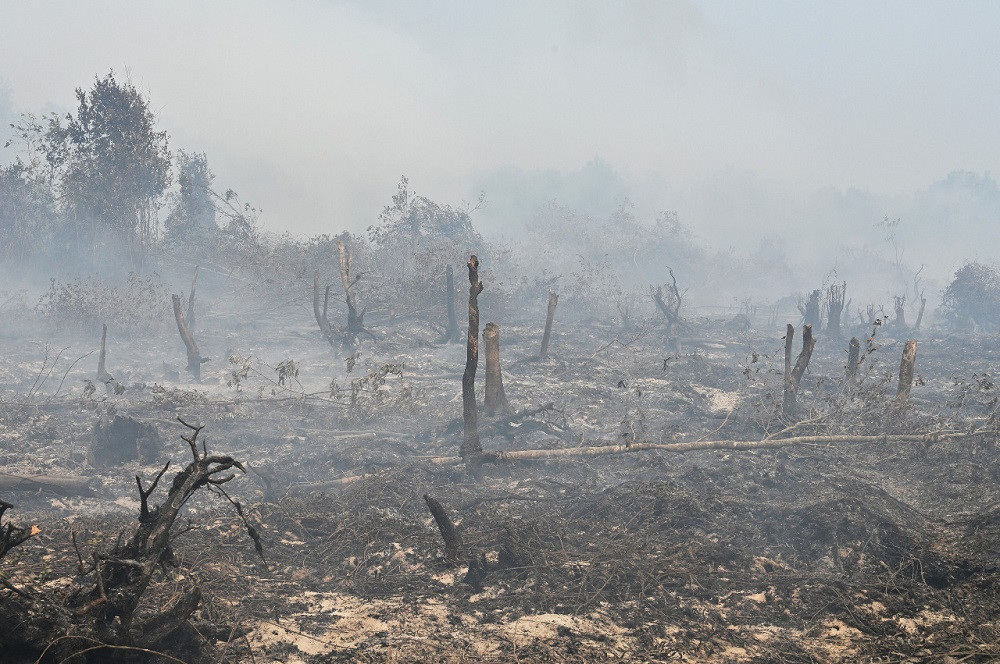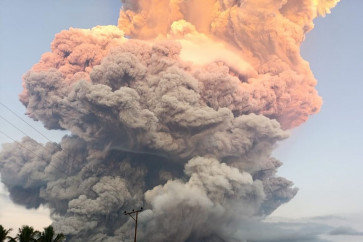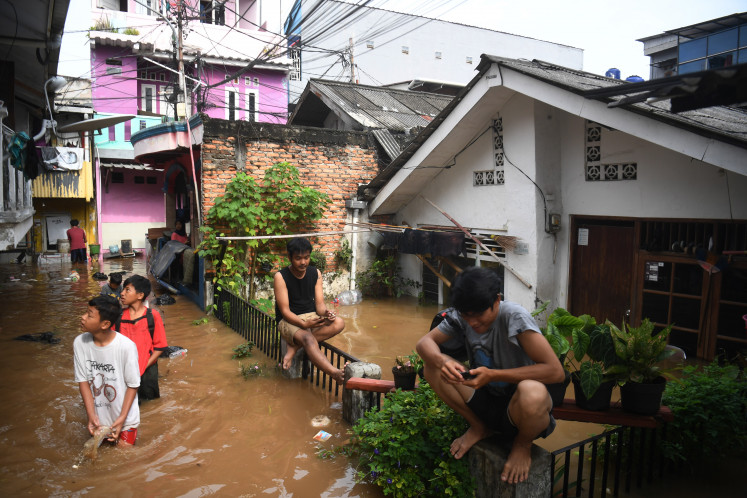Popular Reads
Top Results
Can't find what you're looking for?
View all search resultsPopular Reads
Top Results
Can't find what you're looking for?
View all search resultsSoutheast Asia at high risk of trans-boundary haze: Report
Since the yearly haze outlook report was launched in 2019, the Singapore Institute of International Affairs (SIIA) gave a "red" rating for high-risk trans-boundary haze to occur in the latter half of 2023.
Change text size
Gift Premium Articles
to Anyone

S
outheast Asia is at a high risk of experiencing severe trans-boundary haze occurring in the second half of 2023, a Singaporean think tank has warned, citing upcoming dry spells and market pressure from agricultural commodities.
With the onset of the hotter El Niño weather phenomenon, Singapore is on high alert as the annual dry season brings with it additional risks of land and forest fires developing in neighboring Indonesia and Malaysia, as well as the potential surge of haze and air pollution that comes with it.
According to the 2023 Haze Outlook report released by the Singapore Institute of International Affairs (SIIA), the region has received a red alert rating the likelihood that trans-boundary haze might occur this year.
It was the first time the region has been given the highest rating since the report was launched in 2019 following the massive land and forest fires that raged across 1.6 million hectares of land in Indonesia and caused a four-month transnational air pollution crisis.
“After three relatively haze-free blue-sky years, this year there is a real risk that fire and haze will return,” SIIA chairman Simon Tay told the press in an online briefing from Singapore on Wednesday.
Aaron Choo, a coauthor of the report, said the main factor for this year’s rating was the weather, as multiple meteorological forecasts pointed to an incoming dry spell.
Two regional weather phenomena stand out in particular, he said, pointing to El Niño and warmer sea temperatures in the Indian Ocean, which were also present in 1997, 2015 and 2019, years where trans-boundary haze in Southeast Asia was particularly bad.
“From the weather there is a severe and real risk of a series of dry seasons, with stronger than normal chances of fires,” Choo said.
Aside from dry spells, market trends in recent years have also increased the risk for trans-boundary haze.
Choo noted that from 2020 to 2022, commodity prices of products such as palm oil have been especially volatile, initially due to the COVID-19 pandemic that put constraints on production, and then the Russia-Ukraine war in 2022, which induced an energy crisis and increased prices.
There was also an uptake in palm oil planting and replanting in 2022, he added, likely as a response to the crisis or delayed planting because of the pandemic.
Indonesia and Malaysia are the world’s largest producers of oil palm, a high-yield commodity that has been linked to deforestation and which has been debated in Singaporean politics as contributing to trans-boundary haze.
In the past, Singaporean authorities have made attempts to bring the alleged perpetrators to justice, but they have been largely unsuccessful.
However, SIIA researchers welcomed the policies that the two countries have prepared this year, saying that they were “on track” to reduce deforestation and prevent fires.
Tay said Indonesia and Malaysia “have got their policies right” and that both sides had even sounded the alarm early. “We just hope they carry on [with it], but it’s the weather that is going to be the real stress test,” he said.
Separately, Madani Foundation executive director Nadia Hadad warned that palm oil concessions were at a significant risk of burning this year, as 1Q2023 data from palm oil monitor palmoil.io found that around 2,700 ha of natural forest cover within concessions had been deforested.
Data from palmoil.io also found that around 1,100 ha of peatland had been cleared for palm oil, putting it at an equal risk of combusting.
“Even without this data we can already predict the high risk of land and forest fires because of El Niño,” Nadia told The Jakarta Post on Thursday.
She said aside from the usual fire mitigation efforts, the Indonesian government needed to forbid the clearing and draining of peatland and hold concession-holders accountable, especially those whose areas had been repeatedly cleared by fire.
Responding to the haze report, the Environment and Forestry Ministry’s Natural Resources and Ecosystems Director Thomas Nifinluri said weather and climate analyses, including by the Meteorological, Climatological and Geophysical Agency (BMKG), had already anticipated the high risk of fires this year due to the dry weather phenomenon.
In anticipation of the land and forest fire hazard due to El Niño and warmer Indian Ocean waters, the ministry was jointly planning to increase the intensity of land and aerial patrols with other government agencies.
“We will also use weather modification technology to keep peatland wet and help put out fires,” Thomas told the Post on Thursday.
According to the latest government data, some 28,019 ha of land and forest cover burned between January and mid-June this year.









